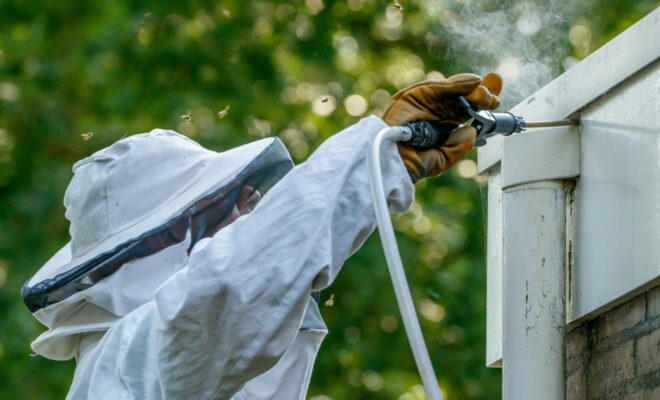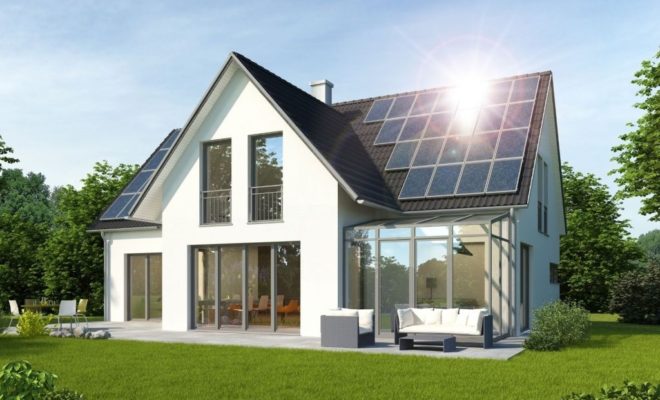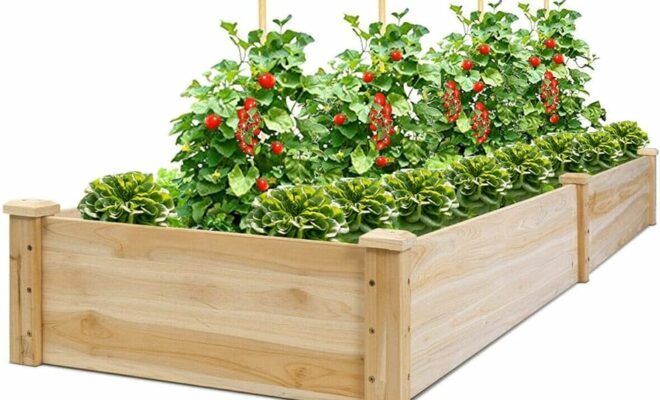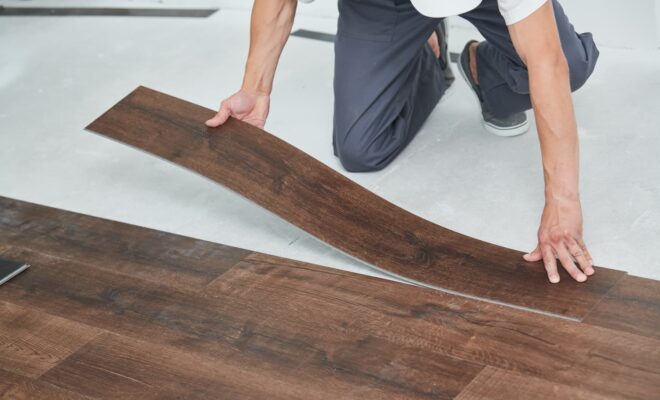Pet-Friendly Artificial Grass: 100% Recyclable, Latex-Free Turf for Your Furry Friends
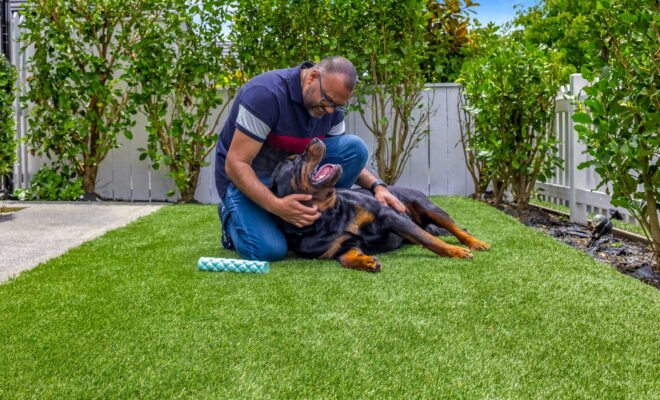
Artificial grass has come a long way from its early, plastic-like roots. Today’s pet-friendly synthetic turf combines durability and comfort with eco-conscious design—making it an ideal solution for pet owners who want a green, low-maintenance yard without the hassles of natural pet friendly artificial grass. In this article, we’ll explore the benefits of artificial grass for pets, why latex-free materials matter, and how 100% recyclable components make this turf the most responsible choice for your furry family members.
Why Choose Artificial Grass for Pets?
1. No More Muddy Paws, No More Holes
Dogs love to run, dig, and roll around—activities that can quickly turn a natural lawn into a patchy, muddy mess. Pet-friendly artificial grass eliminates bare spots and muddy patches, allowing dogs and cats to play freely without ruining the yard’s appearance. Because the turf fibers are woven into a stable backing, digging attempts don’t leave permanent craters, and your pets can’t uproot the entire lawn.
2. Easy to Clean and Sanitize
One of the biggest challenges of owning pets is cleaning up after them. With natural grass, pet urine can create yellow spots, and solid waste can easily get trapped in the soil. By contrast, artificial turf is impervious to stains and odors:
Quick Rinse: Urine simply drains through the turf’s permeable backing into the drainage system beneath. A simple hose-down is usually enough to rinse away any residue.
No More Yellowing: Because synthetic fibers don’t discolor from urine, there are no ugly yellow spots.
Odor Control: Many pet-specific turf products come with antimicrobial-treated turf fibers or infill options that neutralize odors and inhibit bacterial growth.
3. Safe, Comfortable Play Surface
High-quality pet artificial grass is engineered to be soft under paw, yet resilient enough to handle scratching or digging attempts. Modern turf blades are tufted at varying heights and densities to mimic the feel of real grass, providing a comfortable surface for pets to run, nap, or play. The result is a lawn that’s gentle on paws—no more “hot spots” on summer days and no abrasive surface to tear up tender paws.
What Makes “Dog-Friendly Artificial Grass” Different?
When shopping for pet-specific turf, you’ll find that not all artificial lawns are created equal. Here are the key features that distinguish dog-friendly or pet-friendly artificial grass:
Extra-Thick Backing with Superior Drainage
The backing is essentially the “root” system for synthetic turf. Pet-specific grass features a multi-layer backing with large perforations or channels to ensure rapid drainage. After your dog does its business, the liquid drains away quickly, preventing puddles and bacterial buildup.
Stain-Resistant Fibers
Pet urine and feces can contain minerals that stain or degrade lesser-quality turf over time. Look for grass fibers that are treated with UV inhibitors and stain-resistant coatings—these prevent discoloration and keep the turf looking vibrant for years.
Odor-Neutralizing Infill Options
Traditional infill (often sand or crumb rubber) may not address pet odors. Pet turf systems often offer specialized infills—such as zeolite, walnut shells, or antimicrobial-coated silica sand—that trap and neutralize ammonia and other odor-causing compounds.
UV Stabilization and Fade Resistance
Outdoor installations face constant sun exposure. High-grade pet grass is engineered to resist UV rays, which means the blades won’t fade to a brittle, yellowed color over time. This also ensures the turf remains soft and flexible, reducing the risk of overheating on hot days.
The Importance of 100% Recyclable, Latex-Free Materials
Why Latex Matters
Many artificial grasses use latex adhesives to bind the turf fibers to the backing. While effective, latex can pose two issues for pet owners:
Chemical Sensitivity
Some pets (and people) can develop skin irritation or allergies when exposed to latex. A latex-free turf removes this risk, making it safer for pets who spend hours lying, rolling, and playing on the grass.
Durability and Breakdowns
Latex can degrade over time under UV exposure and fluctuating temperatures, leading to delamination (where the turf separates from its backing). Once the backing fails, the turf will need replacement far sooner than expected.
The Environmental Benefits of 100% Recyclable Turf
Traditional artificial grass is often a mix of non-recyclable plastics, rubber, and adhesives, which means end-of-life disposal ends up in landfills. By contrast, 100% recyclable, latex-free artificial grass offers:
Reduced Environmental Footprint: All components—polyethylene blades, polypropylene backing, and recyclable infill—can be reclaimed, melted down, and remade into new products at the end of the turf’s lifespan.
Lowered Waste Generation: Instead of sending old turf to landfills, recyclable turf ensures materials circulate through the recycling stream, conserving resources.
Safer for Local Ecosystems: Because there are no latex or harmful adhesives, there is less risk of chemical leachate into the soil over time.
By choosing a turf system certified as 100% recyclable and latex-free, pet owners minimize their environmental impact and provide a healthier play space for their dogs and cats.
Installing and Maintaining Your Pet Turf
Professional vs. DIY Installation
While DIY turf installation kits are widely available, pet-friendly installations often require specialized underlayment and drainage solutions. Professionals will typically:
Prepare the Base: Excavate existing soil, grade the area, and lay a crushed stone or decomposed granite base to ensure proper drainage and stability.
Install a Weed Barrier: A geotextile or polypropylene weed barrier prevents unwanted growth beneath the turf.
Lay a Permeable Backing: Some pet turf systems include an additional drainage mat or gravel layer to handle high volumes of liquid.
Secure and Seam: Turf rolls are seamed with non-latex adhesives (or mechanical seams) to prevent delamination. Edges are anchored with galvanized turf spikes or landscaping staples.
Add Infill: If you choose an odor-neutralizing infill, it’s broadcasted over the turf and brushed into the blades to create weight, stability, and a natural “spring.”
Tip: If you have a particularly active or large breed dog, ask the installer to reinforce areas where digging is most likely (near fence lines or shaded spots).
Routine Maintenance
One of the biggest perks of artificial grass is its low-maintenance nature. Still, to keep your turf pristine and hygienic:
Daily Waste Cleanup: Scoop solid waste as soon as possible. Bag it or flush it with a hose if you have a drainage-friendly system.
Weekly Rinse: Hose down the lawn, especially in areas where your pet frequently urinates. Use a mild, pet-safe turf cleaner or a vinegar-water solution (50/50 ratio) for additional odor control.
Monthly Infill Check: Over time, infill can shift or settle. Check high-traffic areas and add more infill as needed to maintain blade uprightness and cushioning.
Annual Inspection: Have a professional inspect the seams and backing. Although latex-free turf is durable, heavy use or extreme weather may cause shifting. Re-staple any loose edges and top off the infill if needed.
Periodic Brushing: To keep the blades standing tall, lightly brush the turf fibers (using a soft-bristle broom) against the grain. This helps redistribute infill and maintains the natural look.
Frequently Asked Questions
Q: Will the turf get too hot for my dog in the summer?
A: All artificial grass absorbs heat, but most premium pet turfs are designed with heat-reflective backing and breathable infill to reduce surface temperatures. You can also mist the grass with water before your dog goes outside to cool it down. Providing shaded areas and fresh water is essential whenever temperatures climb above 85°F (29°C).
Q: Can my dog still dig through this artificial grass?
A: Pet-friendly artificial grass is constructed wQ: How long will latex-free, recyclable turf last?ith an extra-dense backing to deter digging. While determined diggers may still scratch at the surface, they won’t be able to dig deep holes. Placing potted shrubs or rock borders along fence lines can discourage them from trying in the first place.
Q: Is installation expensive?
A: Initial costs for pet turf range from $8 to $20 per square foot, depending on the turf quality, drainage requirements, and labor rates in your area. However, when you factor in water savings, fertilizer, mower upkeep, and lawn repairs, many pet owners find that artificial grass pays for itself within 3–5 years.
A: High-quality pet turf is designed to last 10–15 years under normal use. Since it’s latex-free and UV-stabilized, you won’t see early signs of breakdown or discoloration. Regular maintenance ensures it stays in prime condition throughout its lifespan.
Choosing a pet-friendly, 100% recyclable, latex-free artificial grass solution offers unbeatable benefits for both dogs and their owners. You gain a consistently green, mud-free, odor-resistant lawn that’s safe for paws and pawsitive for the planet. By investing in this type of turf, you’re not only providing a comfortable playground for your pets but also making an eco-conscious choice—ensuring that every element of the grass can be recycled and reused at the end of its life. Whether you have a small backyard or a sprawling yard, dog-friendly artificial grass transforms your outdoor space into a virtually maintenance-free haven where you and your furry friends can play, relax, and enjoy the outdoors all year round.

